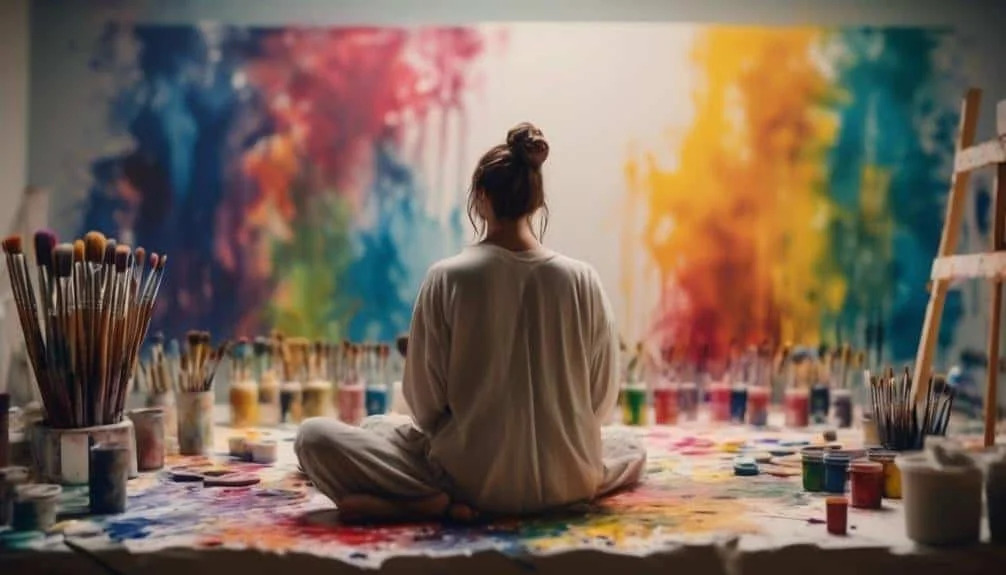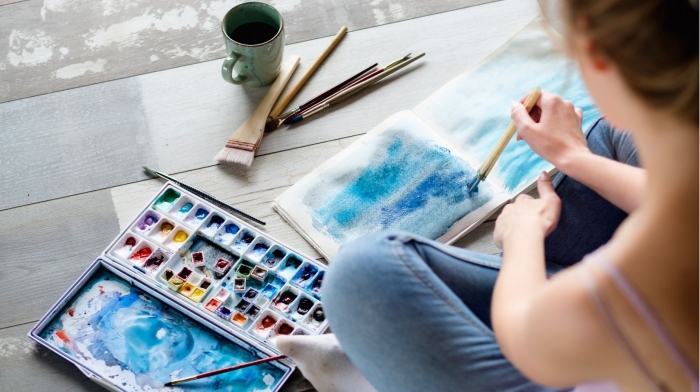
Art Therapy: Unlocking the Healing Power of Creative Expression
Art therapy stands as a profound method of healing that utilizes the creative process to foster mental health, emotional well-being, and personal growth. This article explores the therapeutic benefits of art therapy, delving into how artists and trained professionals harness creative expression to support individuals through their journeys of healing and self-discovery.
Understanding Art Therapy

Art therapy is a specialized form of psychotherapy that integrates the process of creating art with therapeutic techniques to explore emotions, reduce anxiety, and enhance self-awareness. Unlike traditional talk therapy, art therapy allows individuals to express themselves non-verbally, making it particularly effective for those who find it challenging to articulate their feelings verbally. Through painting, drawing, sculpting, and other artistic mediums, clients can access deeper layers of their subconscious, facilitating insights and emotional release under the guidance of trained art therapists.
The Therapeutic Process in Art Therapy

Art therapy sessions typically begin with the creation of artwork in a safe and supportive environment. Clients are encouraged to explore materials freely, experimenting with colors, textures, and forms without judgment. The act of creating art serves as a form of mindfulness, grounding individuals in the present moment and fostering relaxation. Art therapists observe and interpret the artwork, identifying symbols, themes, and recurring motifs that provide insights into the client's emotions and psychological state.
These visual expressions become catalysts for therapeutic dialogue, allowing clients to explore significant life experiences, process trauma, and develop coping strategies. Through guided reflection and interpretation, art therapists help clients make connections between their artwork and their emotions, promoting self-discovery and personal growth.
Benefits and Applications of Art Therapy
Art therapy offers a wide range of benefits across different populations and settings:
Emotional Expression and Healing : Art therapy provides a safe outlet for expressing complex emotions, such as grief, trauma, and anxiety, that may be difficult to verbalize. By externalizing their feelings through art, individuals can gain a sense of control over their emotions and experience catharsis.
Self-Exploration and Insight : Creating art allows individuals to explore their identities, beliefs, and inner conflicts. Art-making facilitates self-reflection and insight, helping clients gain a deeper understanding of themselves and their relationships.
Stress Reduction and Relaxation : Engaging in art-making activities promotes relaxation and reduces stress levels by activating the brain's reward pathways and releasing endorphins. The rhythmic and repetitive motions involved in art creation have a calming effect on the nervous system, promoting overall well-being.
Enhanced Communication and Social Skills : For individuals with communication disorders or social challenges, art therapy provides alternative avenues for expression and connection. Through art-making, clients can improve their communication skills, build self-confidence, and strengthen interpersonal relationships.
Clinical and Therapeutic Settings : Art therapy is widely used in clinical settings to support individuals facing mental health challenges, including depression, PTSD, eating disorders, and addiction. It complements traditional therapies by addressing underlying emotional issues and promoting resilience.
Addressing Limitations and Challenges
While art therapy offers significant benefits, it is essential to acknowledge potential limitations and challenges:
Scope and Accessibility : Access to qualified art therapists and resources may be limited in some regions, impacting the availability of art therapy services for marginalized communities and underserved populations.
Ethical Considerations : Art therapists must adhere to ethical guidelines concerning client confidentiality, informed consent, and cultural sensitivity when integrating art-making into therapeutic practices.
Effectiveness and Research : While numerous studies support the efficacy of art therapy, further research is needed to validate its long-term benefits and comparative effectiveness across different therapeutic modalities.
Practical Guidance for Readers
For individuals interested in pursuing art therapy, whether as clients or practitioners, practical guidance can enhance understanding and facilitate informed decision-making:
Finding an Art Therapist : Seek qualified art therapists accredited by national or international professional organizations, such as the American Art Therapy Association (AATA) or the British Association of Art Therapists (BAAT).
Exploring Art Therapy Techniques : Familiarize yourself with different art therapy approaches, such as Gestalt art therapy, narrative therapy, and mindfulness-based art interventions, to find one that resonates with your therapeutic goals.
Resources and Further Reading : Explore books, workshops, and online courses that provide insights into art therapy techniques, case studies, and ethical considerations in practice.
Conclusion

Art therapy serves as a transformative vehicle for healing, self-discovery, and personal growth through creative expression. By integrating art-making with therapeutic techniques, art therapists empower individuals to navigate emotional challenges, cultivate resilience, and enhance their overall well-being. While celebrating the positive impact of art therapy, it is crucial to acknowledge its complexities, limitations, and ongoing research to ensure ethical practice and evidence-based interventions. As awareness grows and the field evolves, art therapy continues to demonstrate its profound capacity to heal the mind, nurture the soul, and inspire transformative change in individuals and communities alike.







